1 Problems with the battery
This article refers to the address: http://
The battery is a key electrical component in the car, and its performance directly affects the start of the car. The current car start uses the starter motor start mode without exception. During the startup process, especially at the start-up moment, since the starting motor speed is zero, no induced potential is generated, so the starting current is: 1=E/Rm+Rs+Rl
Where: E is the no-load terminal voltage of the battery, RM is the armature resistance of the starter motor, RB is the internal resistance of the battery, and RL is the line resistance.
Since RM, RB, and RL are both very low, the starting current is very large. For example, a 12V, 45Ah battery is used to start a 1.9-liter diesel engine. The voltage of the battery is reduced from 12.6V to about 3.6V at the start-up moment! The battery voltage waveform during the startup process is shown in Figure 1. The instantaneous current is 550A, which is about the discharge rate of the battery's 12C! The battery current waveform during the startup process is shown in Figure 2 (current sensor voltage/voltage conversion ratio: 100 A/V). Although the vehicle battery is a dedicated battery that can be discharged at a high rate, it can be seen in Fig. 1 that the performance of the battery at a high rate of discharge of 10 times or more becomes poor, and the damage of the battery by such a high rate discharge is also very obvious. The drastic changes in the voltage during the start-up process are also extremely strong electromagnetic interference, which can cause the "power down" of the electrical equipment, forcing the electrical equipment to re-power after the generator start-up process, and the computer is very likely to crash in the process. Therefore, it is necessary to improve the performance of the automotive power source during the startup process, whether from improving the electromagnetic environment of the automotive electrical equipment or improving the starting performance of the automobile and the performance of the battery and prolonging the service life.
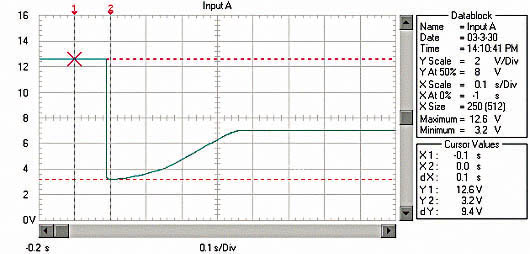
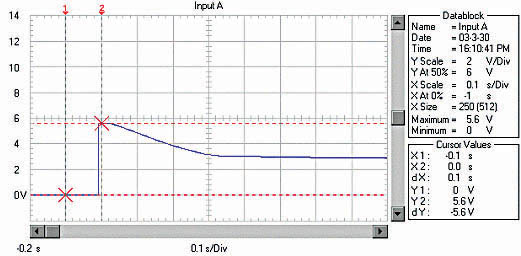
The solution to the problem can increase the capacity of the battery, but it needs to be increased a lot to increase the volume, which is not a good solution. Connecting the supercapacitor in parallel with the battery is a good solution to this problem.
2 Supercapacitor principle and characteristics
2.1 Supercapacitor principle
A supercapacitor is a capacitor with a capacitance of up to several thousand Farads. According to the principle of the capacitor, the capacitance depends on the distance between the electrodes and the surface area of ​​the electrode. In order to obtain such a large capacitance, the supercapacitor reduces the distance between the electrodes as much as possible and increases the surface area of ​​the electrode. For this purpose, the double layer principle and the activated carbon porous electrode are used. The structure of the supercapacitor is shown in Fig. 3. When an electric double layer dielectric applies a voltage to both electrodes of the capacitor, a charge opposite to the charge carried by the electrode is generated at the dielectric interface close to the electrode and is bound to the interface of the medium to form two electrodes of the actual capacitor, as shown in FIG. Obviously, the distance between the two electrodes is very small, only a few nanometers, and the activated carbon porous electrode can obtain a very large electrode surface area, which can reach 200 m2 / gram. Therefore, the supercapacitor of this structure has a large electric capacity and can store a large amount of electrostatic energy. In terms of energy storage, this characteristic of a supercapacitor is between a conventional capacitor and a battery.
When the potential between the two plates is lower than the redox electrode potential of the electrolyte, the charge on the interface of the electrolyte does not leave the electrolyte, and the supercapacitor is in a normal working state (usually below 3V), for example, the voltage across the capacitor exceeds the oxidation of the electrolyte. When the electrode potential is reduced, the electrolyte will decompose and become abnormal. As the supercapacitor discharges, the charge on the positive and negative plates is discharged by the external circuit, and the charge response at the interface of the electrolyte is reduced. It can be seen that the charging and discharging process of the supercapacitor is always a physical process and there is no chemical reaction. Therefore, the performance is stable, which is different from the battery using chemical reaction.
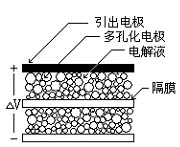
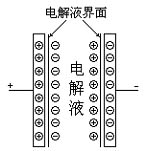
2.2 Main features
Although the energy density of a supercapacitor is 5% or less of a battery, this energy storage can be applied to both conventional battery shortages and short-term high peak currents. Compared to batteries, this supercapacitor has the following advantages:
The electric capacity is large, and the supercapacitor adopts activated carbon powder and activated carbon fiber as the polarizable electrode, and the contact area with the electrolyte greatly increases. According to the calculation formula of the electric capacity, the larger the surface area of ​​the two plates, the larger the electric capacity. Therefore, the capacity of a general electric double layer capacitor easily exceeds 1F, and its appearance has suddenly jumped the capacity range of ordinary capacitors by 3 to 4 orders of magnitude. At present, the maximum capacity of a single supercapacitor can reach 5000F.
The charge and discharge life is very long, up to 500,000 times, or 90,000 hours, and the battery's charge and discharge life is difficult to exceed 1000 times; can provide a high discharge current, such as 2700F supercapacitor rated discharge current is not less than 950A, discharge peak The current can reach 1680A. Generally, the battery can not have such a high discharge current. The service life of some high discharge current batteries at such a high discharge current will be greatly shortened.
It can be quickly charged in tens of seconds to minutes, and it is extremely dangerous or almost impossible to fully charge the battery in such a short period of time.
It can work normally over a wide temperature range (-40°C to +70°C), while batteries are difficult to operate at high temperatures, especially low temperatures; materials for supercapacitors are safe and non-toxic, while lead-acid batteries, Nickel-cadmium batteries are toxic; moreover, supercapacitors can be used in parallel to increase the capacity. If uniform pressure measures are taken, they can also be used in series.
3 Supercapacitor and battery combination improve car start performance
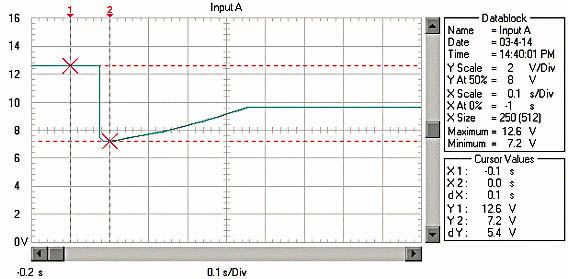
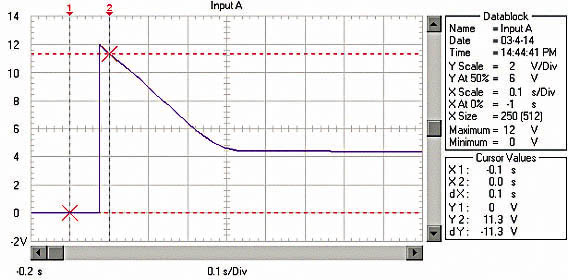
3.1 Improvement of electrical performance
The voltage waveform of the startup process when the supercapacitor is connected in parallel with the battery is shown in Fig. 5, and the current waveform is shown in Fig. 6. Compared with Figure 1 and Figure 2, the instantaneous voltage drop is increased from 3.2V to 7.2V when the battery is only used; the starting current is increased from 560A to 1200A; the instantaneous output power of the power supply is increased from 2kW to 8.7kW; the startup process is smooth. The voltage is increased from 7V to 9.4V; the smooth current during startup is increased from 280A to 440A; the smooth output power of the startup process is increased from 2.44kW to 4.12kW.
3.2 Improvement of startup performance
The parallel application of the supercapacitor and the battery can improve the starting performance of the locomotive. The super capacitor (450F/16.2V) is installed in parallel with the 12V, 45Ah battery to start the 1.9-liter diesel engine, and starts smoothly at 10 degrees Celsius, although in this case When the supercapacitor is not connected, the battery can also be started, but when the supercapacitor is connected in parallel with the battery, the speed and performance of the starting motor are very good. Due to the increase in the output power of the power supply, the starting speed is increased from 300 rpm when the battery is used only to 450 rpm; especially in improving the starting performance (higher starting torque) of the car in cold weather, the supercapacitor is very meaningful. At minus 20 degrees Celsius, since the performance of the battery is greatly reduced, it may not be able to start normally or require multiple starts to succeed, and only one ignition is required when the supercapacitor is connected in parallel with the battery. The advantages are very obvious.
3.3 Improvement of battery application status
When the supercapacitor is connected in parallel with the battery, since the equivalent series resistance (ESR) of the supercapacitor is much lower than the internal resistance of the battery, the 800A current in the 1200A starting current at the start-up instant is provided by the supercapacitor, and the battery only supplies 400A of current. Significantly lower than the 560A using only the battery, effectively reducing the polarization of the battery plate, preventing the rise of the internal resistance of the battery and improving the smooth voltage of the starting process. The most important thing is that the reduction of the polarization of the battery plate not only helps to extend the service life of the battery, but also eliminates the impact of frequent start-up on battery life.
Air Conditioner Purifier,Wall Mounted Air Cleaner,Wall Mountable Air Purifier,Hospital Air Sterilizer
Dongguan V1 Environmental Technology Co., Ltd. , https://www.v1airpurifier.com
